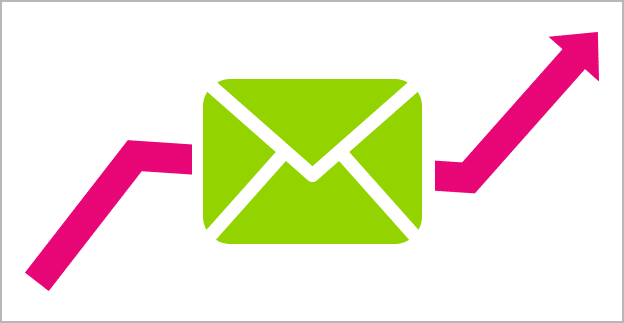Email marketing is a great way to communicate with your audience. And we’re not just saying that because it’s what we do. Email marketing on its own is great; simple, quick, and cost effective. But once you’ve got your standard mailer down, it’s time to crack open email campaigns.
What, exactly, do we mean by “campaign”?
In this context, we use the word “campaign” to refer to a series of pre-written emails sent to a customer in a specific order. Email campaigns have a wide variety of applications, and the type of campaign you send will depend on the type of engagement you want to create with your contacts.
Some types of campaigns are:
- Top-of-mind campaigns help to keep your contacts engaged with your company.
- Educational campaigns provide useful product information to new and prospective customers.
- Re-engagement campaigns can be used to re-connect with customers who may have stopped using your product, or your colder sales leads.
- Promotional campaigns can be used to entice existing customers and sales leads with special offers.
- Training campaigns provide training information to new clients. They can also be used internally for new staff or when up-skilling existing staff members.
Benefits of campaigns

- You only need to build a campaign once. Once it is set up, you can use it for as long as it is relevant.
- Once the campaign is set up, it runs automatically. This frees up sales and marketing resources.
- Email campaigns are sent to a receptive audience . In general, these messages are sent to contacts that have already shown interest in the company.
- Campaigns help companies to build a relationship with customers by sending informative and relevant content to them over a period of time. This consistency helps build a relationship of trust.
- Carefully planning your campaigns means that you will be sending relevant content at the best time, for example, when a customer has recently purchased a product or visited a store.
- Your campaign is more likely to get a response from a contact. This is because they are only sent to people who have already shown an interest in the company, not to a wider audience which includes disinterested people.
How to create a successful campaign

Creating a successful campaign is not a matter of simply drafting a bunch of emails and sending them off to your contacts one-by-one. Campaigns require careful planning and an orchestrated effort, but the results are well worth the investment. Here are a few tips for creating a successful campaign.
1. Have a clear goal in mind
The first step in creating an effective email campaign is to figure out exactly what the goal of the campaign is. Different campaigns require different strategies. A campaign designed to nurture sales leads will look very different to an in-house training campaign. The better you understand your goal, the more accurately you can measure the success of your campaign.
2. Segment
A great way to improve the effectiveness of your campaigns is to segment them for specific audiences. You can create multiple campaigns, keeping most of the content the same but tailoring each campaign so that it addresses specific concerns and requirements of each group.
You can funnel subscribers into the correct segments by having sign-up forms on different pages for the different campaigns.
For example, if you run a number of different newsletters with a different focus for each one, you can segment your subscribers so that each person only receives the kind of information they are interested in.
3. Create really good content
The most important aspect of any email campaign is the content. If you create compelling content you will build a positive relationship with your subscribers. Make sure the content of your emails is relevant, concise, and has a little personality.
If you don’t send good content, your campaign can backfire. Your contacts may become irritated with you, and may unsubscribe.
4. Set Timing and Frequency
The type of campaign you are sending will have an impact on how frequently you send emails. There are no hard-and-fast rules when setting the timing and frequency for your campaigns. In general, you should start with more frequent emails and then taper off as time goes on.
Use your email reports to find out if there is a time or day when your messages enjoy the highest open rates, and try to send your campaign at those times. You can also check your website traffic to see what time of day your audience is engaged.
5. Metrics and Insights
Email campaigns are a long-term investment, one which benefits from fine-tuning. You should be measuring basic statistics like open rates and click-through rates. You can measure the total traffic that your campaign is sending to your site using an analytics program.
Once you start seeing results, compare them to your goals and key performance indicators to make sure your campaign is having the desired effect.
6. Ongoing Optimisation
It doesn’t stop there—now that you have the metrics and the insights, you can use this data to continuously optimise your campaigns and ensure that you are constantly getting closer to your main objectives.












